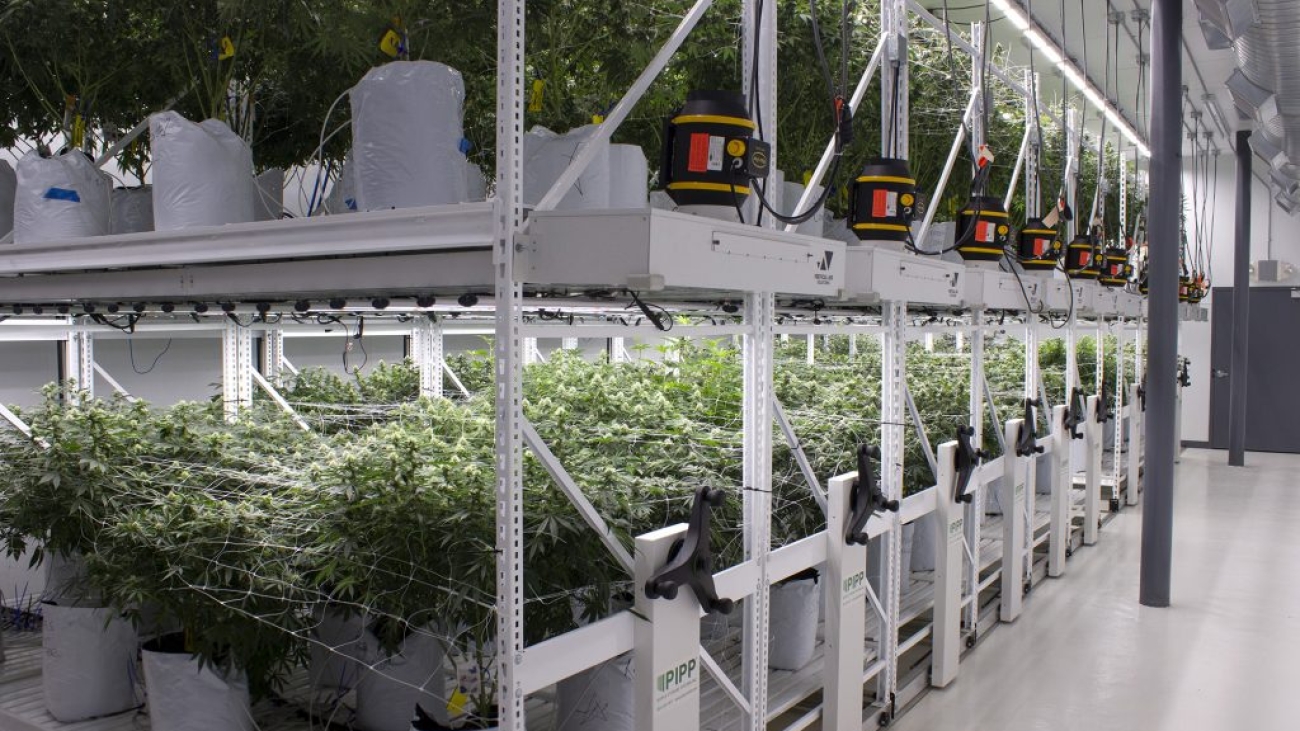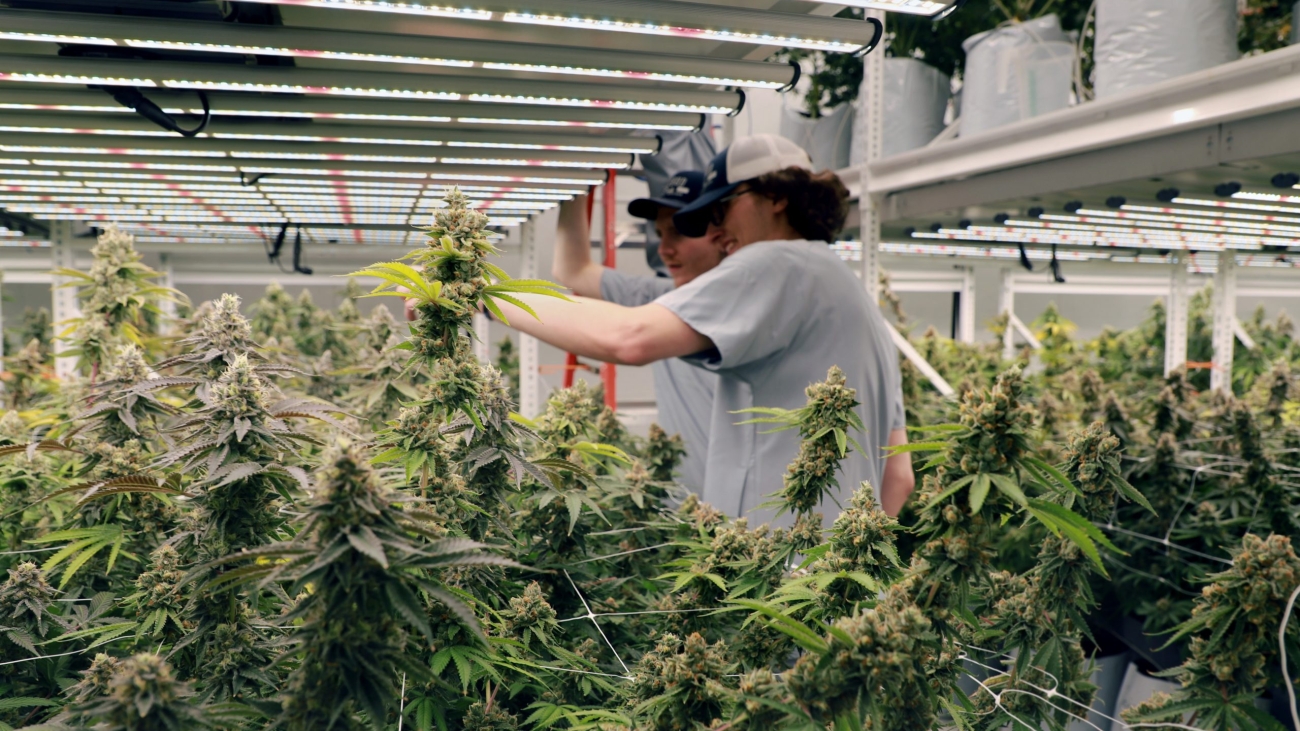Part I: Equipment & Surfaces
Cultivation facilities are a paradise for molds, pathogens, microbes, fungus, and invasive insects. If you think about it, they’re in perpetual states of spring or summer, which is the perfect breeding environment for pests and disease. This is why grow room sanitization is critical to keep your cannabis grow environment clean and free of anything that may increase the chances of experiencing a problem later on down the road.
Just keep one thing in mind: no matter how good of a grower you may be, even the best of them battle pests and diseases at one point or another.
In this three-part series, we’re going to look at how to sanitize your cannabis cultivation facility. Part I, below, focuses on equipment and surfaces. Part II will cover methodology around plants and substrates. And Part III will review the sanitization of HVAC and air distribution systems. We will also cover how to properly validate that your cultivation space is sanitized and we will cover a management system to help you stay compliant with local and federal regulations.
Let’s Jump In
Keeping a regular schedule of inspecting and cleaning your cultivation facility, along with the application of preventative products, is key in mitigating problems before they get out of hand. Infestations cost you labor and capital when the quality or yields from your harvest are compromised. Taking a proactive approach will save you time, energy, and money, as well as give you consistent, high-quality, cannabis yields. If you are going to put all that effort into your operation you owe it to yourself to take the necessary precautions. So, let’s get started in covering how to prevent some common problems.
Preventative Methods
One important, preventative activity is sweeping and vacuuming the grow area of any leaves, soil, or other debris. We recommend using a Shop-Vac that includes a HEPA filter, which can help prevent the spreading of pests and diseases. Many growers do this between cycles and after major plant pruning/maintenance events. But to truly make this a preventative activity, schedule regular cleanings and inspire good habits in employees who service the rooms daily.
Disinfecting Vs. Sanitizing
After the debris has been removed, you will move on to the next step of sanitizing and disinfecting. So what does it really mean to disinfect or sanitize? These words are often used interchangeably, but they are not one and the same. Let’s start with the basic term, cleaning. According to the Center for Disease Control (CDC), cleaning removes impurities, dirt, and germs from objects or surfaces. Sanitizing reduces pathogens on any given surface down to a safe level, as set forth by public health standards. In order to properly sanitize, the solution used, has to reduce microorganisms by 99.9% within a 30-second window.
Disinfecting, on the other hand, requires a reduction of these microorganisms down by 99.999% in a five to ten-minute timespan. This is basically killing these pathogens off. The difference between 99.9% and 99.999% may seem very small, but surfaces contain millions of microorganisms. It only takes a few minutes for particles to quickly spread infection. Darrel Hicks, author of “Infection Prevention for Dummies” uses the following example to highlight the difference:
“On any given day, there are 102,465 commercial flights in the world,” he says. “If 99.9 percent of those flights arrived safely to their destination, then that means 1,025 airplanes would crash every day. At 99.999 percent, only 10 would crash every day.”
So to recap, cleaning gets rid of dirt and debris on surfaces, sanitizing lowers the number of germs (99.9%), and disinfecting basically kills them outright (99.999%).
Back to Basics: How to Sanitize & Disinfect Surfaces & Equipment
According to the CDC and the US Department of Agriculture, it is recommended that you clean first, before sanitizing or disinfecting. After, the application of special solutions, like Bio-Foam which we’ll cover later, will sanitize those surfaces. A common recipe is 1 tablespoon of liquid chlorine bleach (unscented) to 1 gallon of water. To disinfect, you can choose to use special biologically safe solutions or a household bleach solution. Ensure that the surface remains wet for several minutes to make certain that you’ve killed off all the germs.
UV Sterilization
UV sterilization is a completely chemical-free disinfection and sterilization method that uses ultraviolet light to kill microorganisms like powdery mildew, bud mold, bacteria, fungus, and other DNA-based contamination. There are 3 types of UV. UVA, UVB, and UVC. UVC is used for sterilizing hospitals, airplanes, offices, and factories. UV Sterilization uses UV light (100 – 400 nanometers in wavelength) outside of the visible light spectrum (400 – 800 nanometers in wavelength) to disrupt and destroy DNA, leaving the contaminants unable to perform their cellular functions. There are 3 types of UV light. UVA, UVB, and UVC. UVC is used for sterilizing hospitals, airplanes, offices, and factories.
Proper dosage is crucial, as some molds require 50 times higher dosage than bacteria, with using a low dosage of UV light leaving some growers disappointed with the results. On the other hand, be careful of a high dose, as it can deplete your cannabis plants with the important elements they need to grow. This includes iron, boron, manganese, and beneficial microbes. UV sterilization can also cause your plants to undergo color change and terpene loss through oxidation. Test for any deficiencies as you go, so you can mitigate problems before they get worse and out of control.
Ozone Sanitation
Ozone sanitation has become an increasingly common method of air purification in cannabis cultivation facilities. Ozone gas occurs twice, once in the upper atmosphere, which protects life here on earth from the sun’s harmful UV rays. And a second time at ground level, which is produced by pollution and smog commonly found in urban areas. Ozone gas is capable of cleaning the air in the immediate cannabis cultivation environment. Ozone sanitation accomplishes this by emitting ozone gas that kills diseases, fungus, and odors. At high levels, ozone gas can be an effective form of sterilization.
Human safety and exposure and the importance of being able to purge Ozone out through a ventilation fan after desired saturation levels/duration are achieved. NIOSH recommended exposure limit for ozone is 0.2 ppm. Ozone levels of 5 ppm or higher are considered immediately dangerous to life or health. OSHA requires that workers not be exposed to an average concentration of more than 0.10 ppm for 8 hours.CAUTION: It is important to purge Ozone out through ventilation fans after the desired saturation levels/duration has been achieved.
The National Institute for Occupational Safety & Health (NIOSH) recommends exposure limits for ozone at 0.2 ppm. Ozone levels of 5 ppm or higher are considered immediately dangerous to life or health. The Occupational Safety & Health Administration (OSHA) requires that workers are not to be exposed to an average concentration of more than 0.10 ppm for 8 hours. While ozone can be a very effective method of air purification, there are also products that can help you sanitize the hard-to-reach areas on surfaces and equipment.
Sanitization Products for Those Hard-to-Reach Nooks & Crannies
Bio-Foamer – enables the sanitization of hard-to-reach areas and surfaces. The foam ensures full coverage by creating a visual indicator of the areas of application. It adheres to those surfaces for extended effectiveness. The foam requires low to minimize water waste, which makes it ideal for drain-less operations.
The foam is left on the surface to air dry and there is no need to rinse. Bio-Foamer enables you to cover large spaces, including floors, doors, walls, ceilings, transport carts, grow trays, racks, equipment, etc.
Bio-Fogger – this is a portable sanitization and disinfecting system that uses supercharged fog. The solution is comprised of activated peroxide. You can use Bio-Fogger on air filters, dehumidifiers, ducts, irrigation lines, lights, sensors, and above-ground tracks.
Passive Systems – these “organic” air purification systems are used to protect your crops from bacteria, powdery mildew, gray mold, and all kinds of pathogens. Multi-Cluster Ionization Technology is used to create high levels of ions (both negative and positive) through the use of a Dielectric Barrier Ionizer (DBI). This creates ions that have a longer dwell time and life than other types of systems. The result is boosted efficiency in killing all kinds of pathogens, including bacteria, mildew, and molds.
Summary
We have covered the importance of using an integrative approach to sanitizing your cannabis cultivation facilities and the tools to do so. There are many types of products to assist in accomplishing this, like ozone, UV, Bio-Foam, Bio-Fogger and passive systems like the MCI technology. Your actual grow room equipment can also play a huge role in your sanitizing efforts. You may be interested to know that products like PIPP vertical grow racks contain anti-microbial and fungal-resistant additives. While they still require vacuuming of the track grooves, PIPP vertical grow racks move along the tracks and expose the entire grow room for easy and efficient floor cleaning. Best of all, the stainless steel track inserts, carriage wheels, and marine-grade aluminum carriages are corrosion and oxidation-resistant.
Keep an eye out for Part II, coming soon, where we cover the sanitization of cannabis plants and substrate, as well as Integrative Pest Management (IPM) in the vertical cannabis farm and why it is more effective than other methods of pest control.



